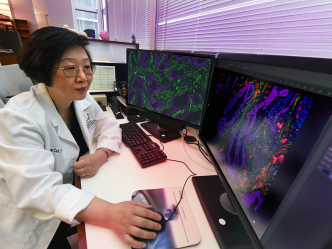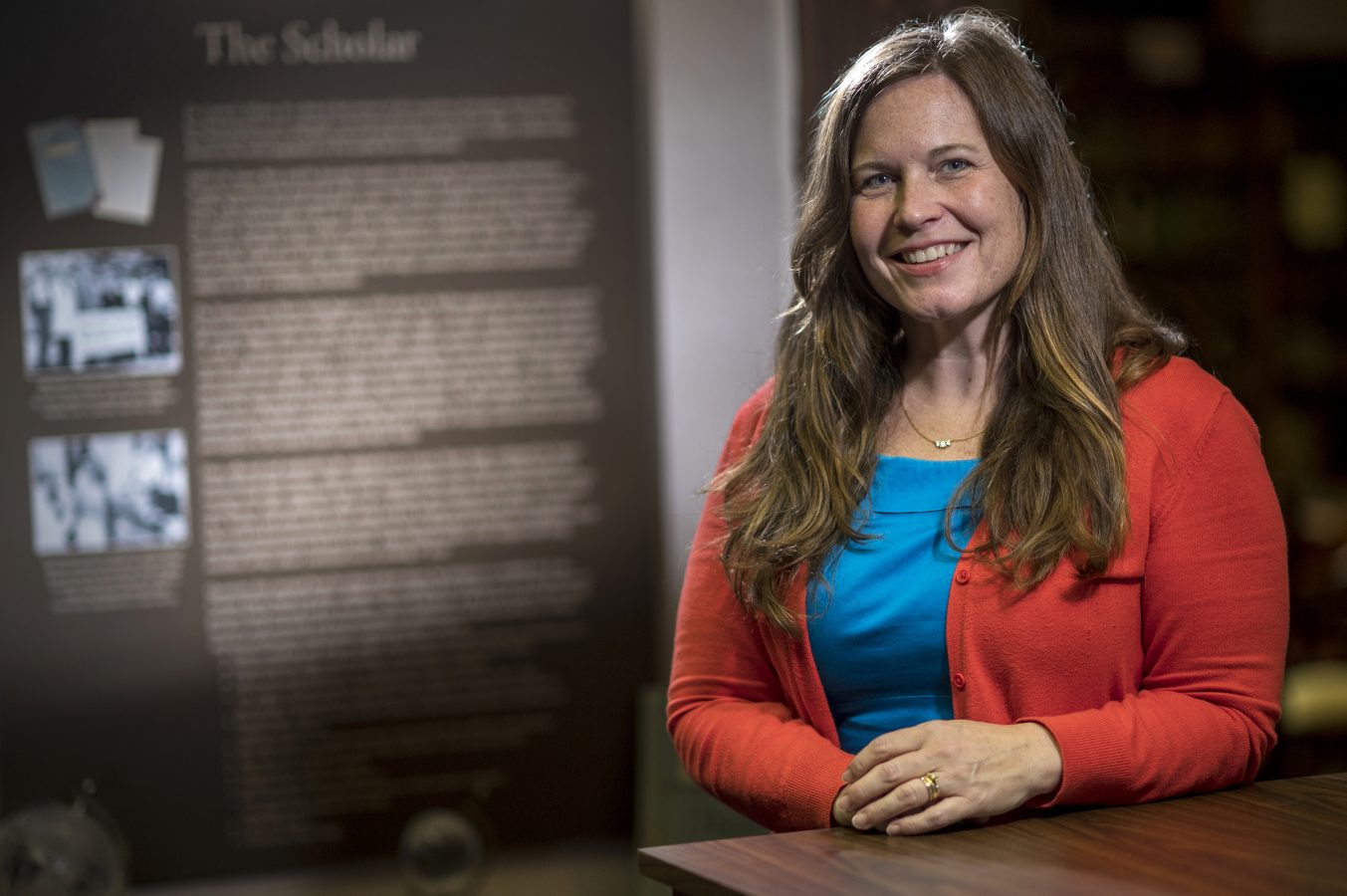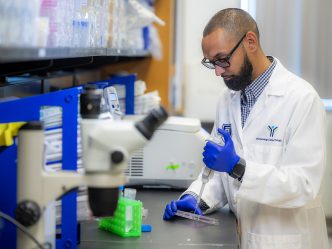New research at Augusta University led by Vinata B. Lokeshwar, PhD, could soon provide doctors and patients a way to predict if a cancer treatment will work for an individual, as well as expand treatment options for patients whose cancer is resistant to common chemotherapy treatments.
When it comes to cancer treatments, it is often difficult to predict if and how well a patient’s cancer will respond to specific treatments before starting a regimen. This poses a challenge because if the cancer does not respond to a prescribed treatment, the cancer may continue to spread during the course of the treatment, and, at the same time, the patient may experience negative treatment-related side effects.


Lokeshwar, chair of the Department of Biochemistry and Molecular Biology at AU’s Medical College of Georgia, and her research team have discovered two drugs already approved by the FDA can make a bladder tumor less resistant to Gemcitabine Hydrochloride (GEM).
Gemcitabine is a common chemotherapy drug used in chemotherapy regimens for different types of cancer, including bladder, breast and pancreatic cancers; however, Gem combinations are empirical, not without toxicity and little is considered about therapy failure due to tumors’ resistance to treatment.
Lokeshwar’s research focuses on discovering better diagnosis and treatment of the metastasis of prostate, bladder and kidney cancer, and she developed tests to detect bladder cancer cells in urine.


She and her team are responsible for discovering a first-of-its-kind enzyme that cleaves sugar polymers called chondroitin sulfate (CS) from protein molecules. This enzyme, which her husband, Bal Lokeshwar, PhD, nicknamed as Chase for chondroitinase, drives bladder tumor growth and its ability to spread and makes tumors resistant to Gem. The Lokeshwar Lab discovered how levels of Chase can predict if a patient would develop metastasis – the process by which cancer cells spread to other parts of the body – in the future, as well as which patients would not respond to Gem-based treatments.
The team also discovered two drugs currently approved by the FDA for treating non-cancer diseases inhibit Chase-mediated resistance of bladder tumors to Gem. It was this discovery that earned Vinata Lokeshwar a $2.8 million grant from the National Cancer Institute in an effort to improve outcome in patients with aggressive, advanced bladder cancer.
Bal Lokeshwar, Martha K. Terris, MD, Pablo Santamaria, MD, Roni Bollag, MD, Sravan Kavuri, MD, Santu Ghosh, PhD, and Wenbo Zhi, PhD, serve as co-investigators on the funded grant.
Lokeshwar’s research team includes graduate student Karina Aguilar; research associate Sunita Panda; post-doctoral fellows Anuj Sharma, PhD, and Kunj Gupta, PhD; medical student Josh van der Eerden; and Luis Lopez, Lokeshwar’s longtime research collaborator and the current BMB administrator.


The team is also receiving consultation for the project from John A. Taylor III, MD and Benjamin L. Woolbright, PhD, from the University of Kansas; Murugesan Manoharan, MD, from the Miami Cancer Institute; Murali Ankem, MD, from the University of Louisville School of Medicine; Sushant Kachhap, PhD, with Johns Hopkins Medicine; and Michael Bartlett, PhD, College of Pharmacy University of Georgia.
According to the American Cancer Society, bladder cancer is the fourth most common cancer in men (1 in 28) while only 1 in 91 women will develop it.
The ACS estimates about half of bladder cancer instances are found while the cancer is still in the inner layer of the bladder wall, making it non-invasive, but according to ACS, 1 in 3 bladder cancers will have spread into deeper layers of the bladder wall, but are still limited to the bladder.
For patients whose bladder cancer has not invaded the bladder wall, removal of the tumor is an option that will allow them to keep their bladder, but if a tumor has invaded the bladder wall, the most effective form of treatment is to completely remove the bladder.
Prior to having bladder removed, patients can opt to receive treatment in an attempt to shrink the tumor and treat small amounts of metastasis. Although newer treatments, including immunotherapy, have offered hope, the response rate is less than 25%, which leaves chemotherapy as the main treatment to shrink the tumor before surgery and for treating metastatic disease.
“Few studies have evaluated why patients’ bladder tumors are resistant to Gem and how to overcome it,” Lokeshwar said. “If a doctor knows which patients will not respond to a specific treatment before starting a three- or four-month-long regimen, then the patients can be given another treatment that works, and valuable time is not wasted while the tumor keeps spreading and patients suffer the side effects.”


Terris, chair of the Department of Urology, notes that despite this rigorous treatment and bladder removal, about half of these patients develop metastasis within two years and will have to be treated with intravenous infusions, and their survival rate with metastatic bladder cancer is two years or less.
“A newer form of Gem-based treatment that is offered at MCG is sequential Gem-based bladder instillations to delay/prevent a new tumor coming back, if only the tumor and not the patients’ bladder is surgically removed. In this newer treatment, Gemcitabine, in combination with docetaxel, is put directly into a patient’s bladder to treat any microscopic residual tumor,” said Terris.
“The two FDA-approved drugs that overcome a tumor’s resistance to Gem could improve response to various Gem-based treatments, including the newer Gem-based bladder instillations and achieve a better outcome for patients,” said Lokeshwar.
Lokeshwar, the recipient of the Society of Women in Urology/Society for Basic Urologic Research and the Award for Excellence in Urologic Research in 2021, serves as the senior editor of the textbook, Bladder Tumors: Molecular Aspects and Clinical Management, a section editor for the journal Urologic Oncology-Seminars and Original Investigations and a member of the editorial boards of Cancers, World Journal of Urology and Bladder Cancer.
She currently serves on the American Urological Association’s Research Council. In 2018, the Society for Basic Urologic Research honored Lokeshwar with its Distinguished Service Award. She served as the society’s president from 2012-13. She has also served as a representative on the group’s Patient Advocacy, Executive and Program committees, as well as organizing the 2009 8th World Basic Urological Research Congress, in conjunction with the European Association of Urology.
 Augusta University
Augusta University





